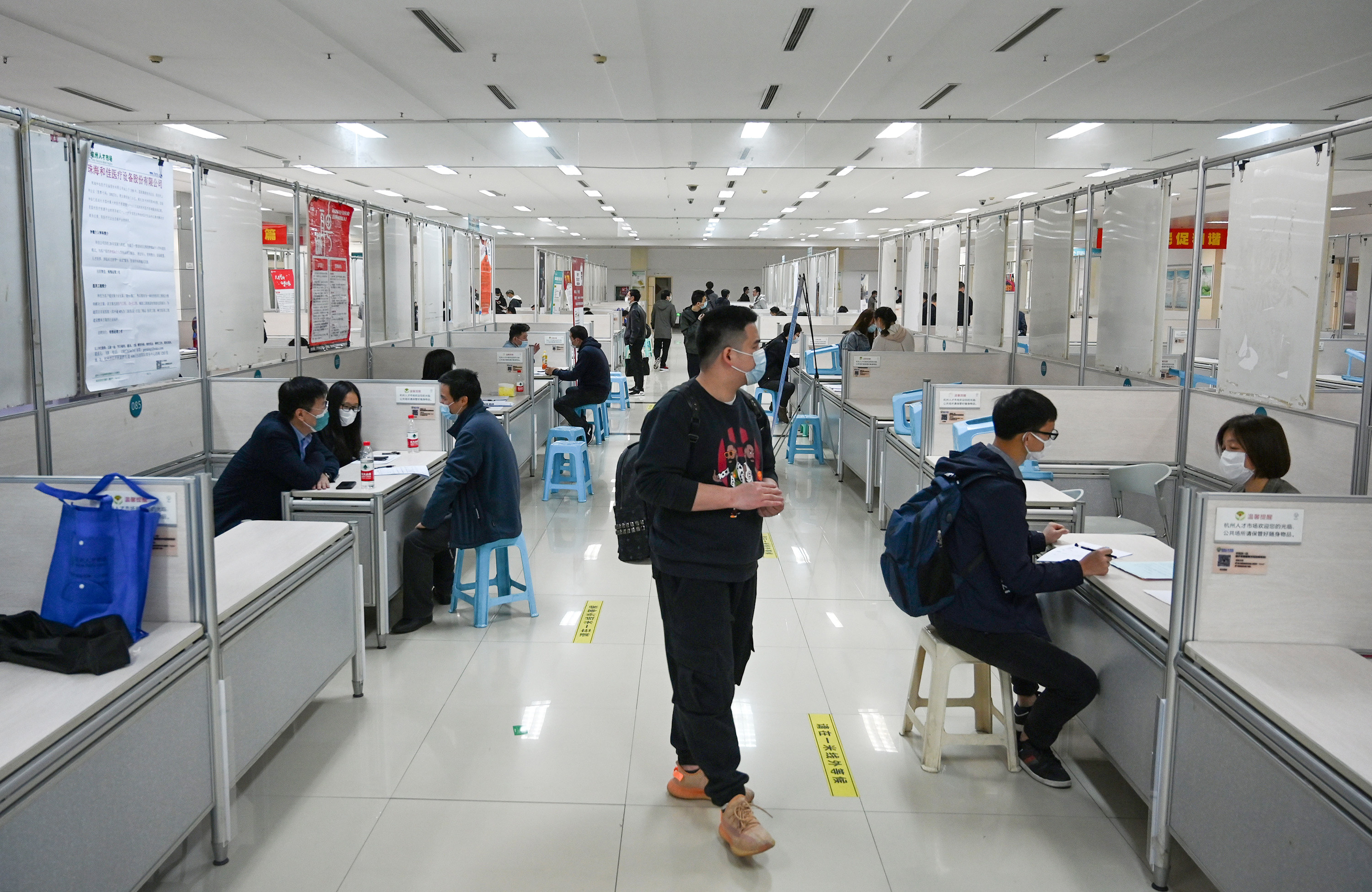China's true unemployment pain masked by official numbers
Sign up now: Get ST's newsletters delivered to your inbox

The surveyed urban unemployment rate is 5 per cent - slightly better than pre-pandemic levels.
PHOTO: REUTERS
Follow topic:
BEIJING (BLOOMBERG) - China's steady jobless rate is masking pain in the labour market that leaders will find hard to ignore as they look to stimulate the economy in a crucial political year.
Alternative indicators and anecdotal reports suggest unemployment is worse than the official monthly figures show. From weak consumer spending to strict Covid-19 control measures and the government's regulatory crackdown on the edutech and property industries, the labour market is under considerable strain, economists say.
Jobs are an overriding consideration for government officials as the Communist Party prepares for a twice-a-decade leadership meeting later this year. Beijing has already signalled a pro-growth bias in its policies, with economists expecting interest rate cuts and a pickup in fiscal spending early in the year.
The surveyed urban unemployment rate of 5 per cent - slightly better than pre-pandemic levels - is expected to stay unchanged when the government publishes December data on Jan 17.
However, there are several problems with the survey that are becoming stark in the current downturn: The figures are not sensitive to changes in the number of migrants from China's rural areas who work in cities; they also do not capture the number of people who have dropped out of the labour market for more than three months or those unable to start work, for example, because they have to undergo quarantine.
A former finance minister also recently highlighted concerns about China's statistics, saying they do not properly capture negative economic changes.
Here are some of the key reasons economists believe China's labour market is under stress.
• Troubled services
The services industry is the biggest source of jobs in China, employing about 47 per cent of the labour force. Consumer spending on contact services such as travel and dining was consistently weak last year, making businesses in those sectors reluctant to hire new workers. Business closures as China enforces strict restrictions to stamp out Covid-19 infections have also reduced demand.
The employment sub-index for China's non-manufacturing purchasing managers' index, which tracks hiring intentions in the service and construction sectors, has stayed consistently below pre-pandemic levels for most of the past 12 months. The economy created 12 million new urban jobs in the first 11 months of 2021, according to official data, below the 12.8 million created over the same period in 2019.
• Migration moves
China has a population of about 180 million migrant workers who reside some of the year in poorer rural areas but work most of the year in cities. Before the pandemic, the number of such workers increased by two million to three million each year, according to official data. Migrants who leave the cities are not included in China's urban unemployment survey.
Official data shows there has been no growth in the migrant worker population since the pandemic. Dr Lu Feng, an economist at Peking University in Beijing, estimates a six million gap between the number of migrants currently working in cities and the pre-pandemic trend.
"The relative decrease of millions of migrant workers in two years could cause hundreds of billions of renminbi of income loss," he said.
Some believe that the outflows could be worse than the official data suggests. Economists at Guolian Securities found that over recent months, retail sales in provinces that usually have net outflows of migrants have been stronger than in provinces that normally see net inflows - suggesting large numbers of migrants are staying closer to home.
"We believe that the data on retail sales of consumer goods provides evidence of labour repatriation," they wrote.
• Shrinking industry
China's exports boomed during the pandemic and many factories struggled to find workers. Nonetheless, official data showed a trend of shrinking employment in manufacturing, likely in part due to increased automation.
The average number of workers at industrial enterprises with revenues above 20 million yuan (S$4.2 million) fell from 7,419 in November 2020 to 7,398 in November 2021, according to official statistics. Textile and apparel companies saw the largest decline by that measure.
The government caused panic in financial markets last year with its ban on companies offering after-school tutoring for profit, and its moves to rein in the vast real estate sector. Both have had a negative impact on the job market. One of China's top tutoring companies revealed this week it had fired 60,000 workers last year. Wages in the education, tourism, and real estate sectors all fell in the final quarter of 2021, according to online job market Zhaopin.
• Drop-outs
The official jobless survey defines the unemployed as those who have actively sought a job within the past three months and would be able to start a new job within two weeks. China has placed hundreds of thousands of people in quarantine, usually for weeks at a time, as part of coronavirus control efforts since the summer - those people would not meet the second condition and would not be counted among the unemployed.
Due to the weak labour market, record numbers of young people are preparing to take exams to qualify for postgraduate courses or enter the civil service. The numbers sitting those exams in 2021 rose by more than 1.6 million from 2019, economists at Minsheng Securities said in a note.
As they would not be counted as job seekers, "the actual employment pressure of college students is higher than what the unemployment rate shows", the economists said.

